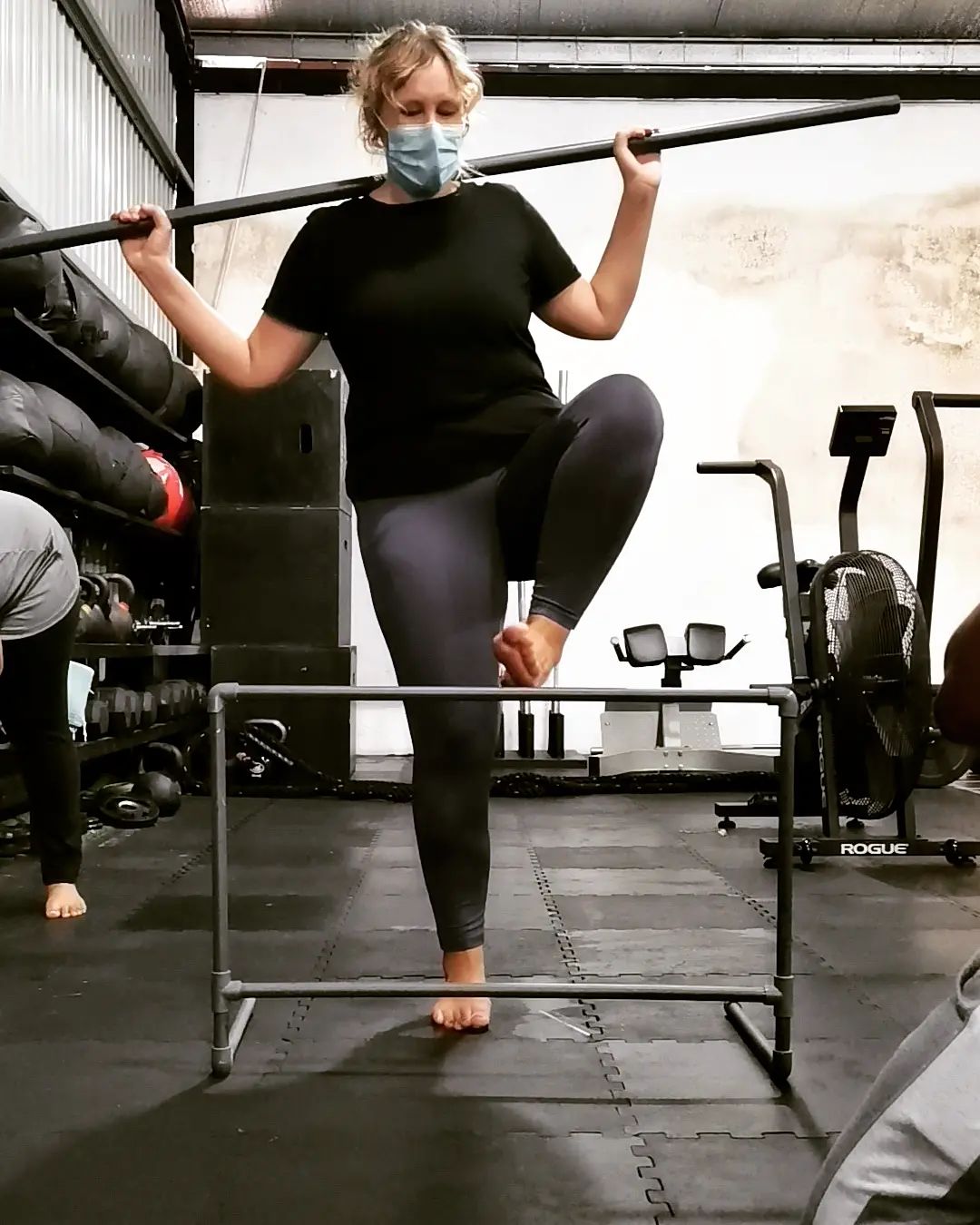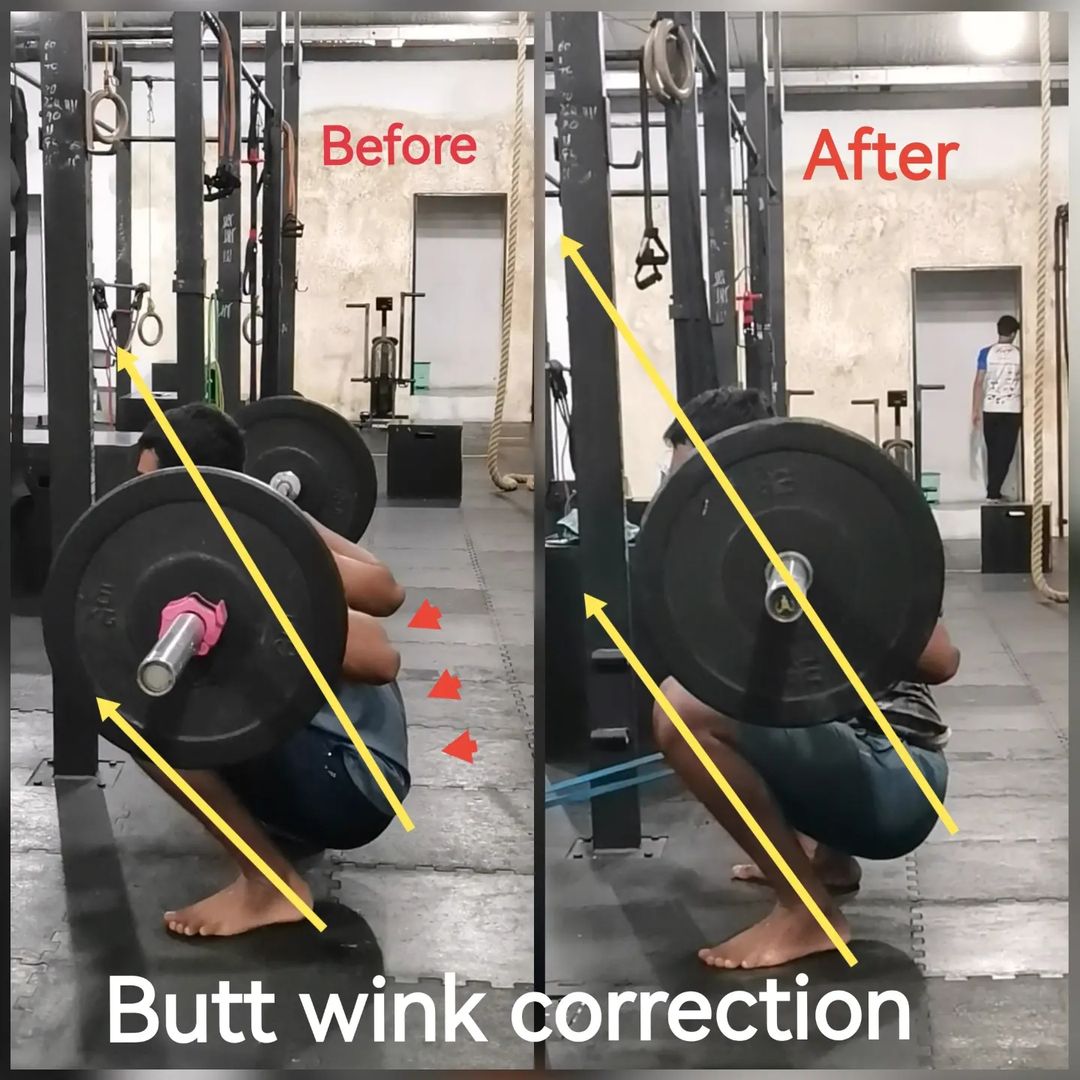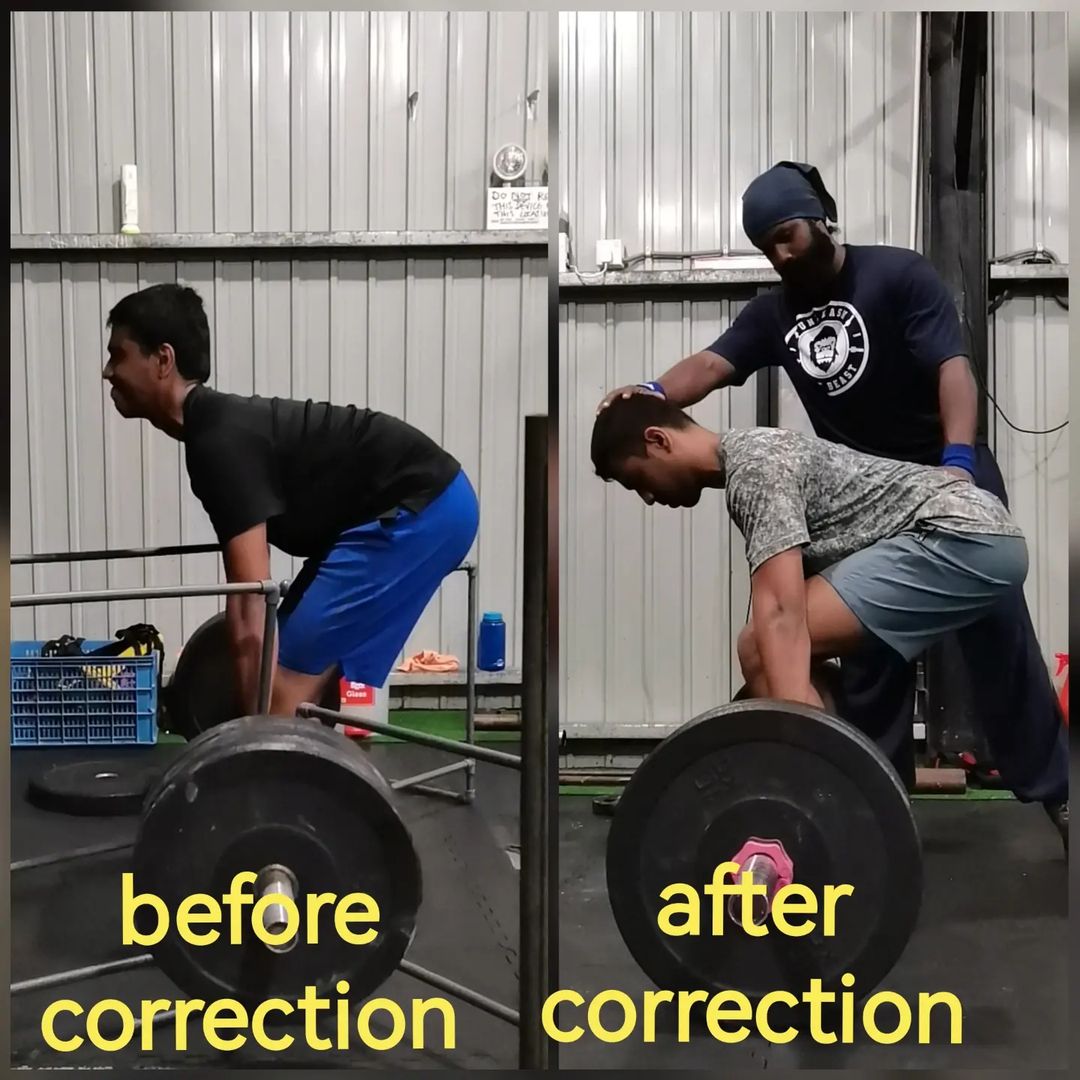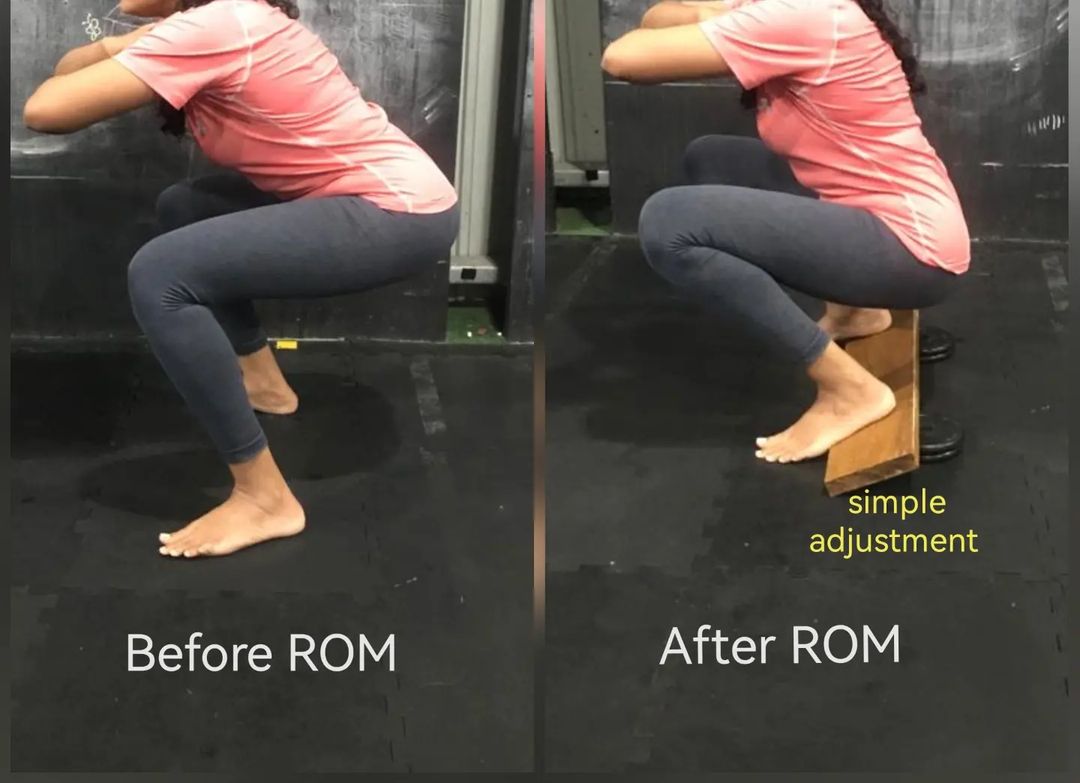Case Studies
Case Study 1: Hurdle Step test
The hurdle step is developed to test the body's own stride mechanics during a stepping
movement.
The movement requires proper coordination and stability between the hips and torso during
the
stepping motion, as well as single-leg stance ability.
The movement requires proper coordination and stability between the hips and torso during
the
stepping motion, as well as single-leg stance ability. The hurdle step measures bilateral
functional mobility and stability of the hips, knees, and ankles.
What muscles are used in the hurdle step?
- Rectus abdominal
- Hamstring
- Gluteus Maximus and Hip Flexors
Tip: Coach Supun's Advice is to improve your joint mobility & stability before weighted Squat. Do not miss your Functional Fitness assessment.

Case Study 2: Butt Wink
Butt wink is the posterior tilt of the pelvis that occurs towards the bottom of the squat.
When
this occurs, it causes the lumbar spine to round and go into flexion.
In anatomical
terms,
it is spinal
flexion and arises due to the pelvis tucking under near the bottom of a squat. When the
pelvis
tucks in this way, it is known as a posterior pelvic tilt.
How to stop Buttwink?
- When you get to the bottom of your squat, curl the weight down to the floor and place it on the ground.
- Slowly let go of the weight and try to not let your spine round or fall over on your butt.
Tip: Coach Supun's Advice is to Essentially, unload the weight and don't let your posture or position change.

Case Study 3: Why can't I keep my back straight when deadlifting?
If you can't keep your back straight while deadlifting it usually means that you have a poor set-up. If you've mastered the breathing and bracing technique above, and you're still rounding, look to the following reasons for improving your set-up: Ensure the bar is 'on you the entire time.
Can you deadlift more with bad form?
Yes, you may be able to lift more with "poor form" right now, but as you get better, that will change. Eventually, you will be able to lift more with "good form," because you will be using your strengthened muscles correctly, with enough control to keep them in tensegrity.

Case Study 4:Squatting with long legs
Squatting with long legs can be very difficult. The length of your thighs impacts body positioning making hitting full depth more difficult than it is for shorter-legged athletes. But with a few simple adjustments, we can often rapidly improve positioning for better squat mechanics.
How should people with long femurs squat?
- Use a Wide Squat Stance
- Work on Your Hip Mobility
- Squat Using a Low Bar Position
- Wear Heeled Squat Shoes
- Place Your Torso More Horizontal To The Floor
- Work On Your Ankle Mobility
- Build Strong Hip & Back Extensors
Tip:Do not compare yourself to other lifters.

